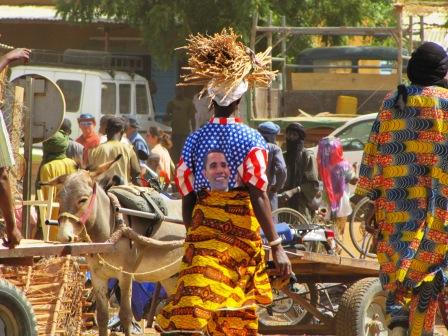
After two weeks in Benin and Burkina Faso, Dakar felt like another planet. Beautiful palm promenades by the sea, fancy hotels, big houses... Dakar is much more developed and much richer. There are plenty of spots of poverty, but what became clear to me was its sense of style and cosmopolitan feel.
One clear fact is that Senegalese people are beautiful, drop dead beautiful. Tall handsome men. Gorgeous women. And Dakar knows how to show them off.
I had two separate daylong visits where Callie, a Princeton in Africa Fellow who is working for the UN World Food Program in their West Africa regional office showed me around. I visited her office, met with her boss, learned more about the work WFP is doing in the region. Afterwards Callie and I spent time walking around downtown and seeing the sites. Dakar is on a peninsula and has beautiful blue water all around it and tropical sea breezes.

















